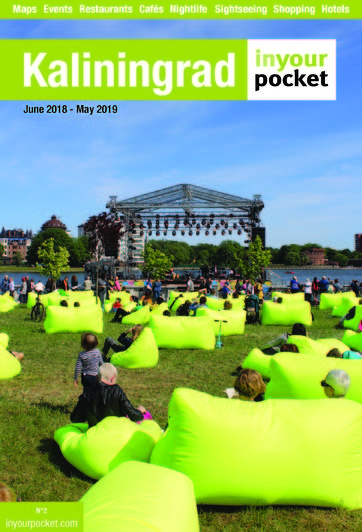Kaliningrad’s public transport system consists largely of buses, but there are so many that you will rarely be left waiting for too long. The public transport system has no exact timetable, but on average buses run about 10 minutes apart on most routes. In addition almost all bus routes are duplicated by several minibuses as well as trolleybuses and trams. Fares are fixed on public transport regardless of how far you travel costing 18Rbl on the bus, trolleybus and tram and 22Rbl on mini buses. The most scenic way to travel is on one of the old Czech trams, whose routes pass through the most historic parts of the city such as the former royal castle, the House of Soviets, the cathedral and the Fishing Village. On most buses you will find a female conductor who will take your fare, while you should pay the driver directly in mini-buses.
Jump to:
Public transport
Kaliningrad’s public transport system is made up largely of buses, with a few remaining tram routes. There has been a concerted attempt to try to improve the bus service and unify the look with the purchase of a fleet of orange buses from Belarus. The result is that the main routes now have modern air-conditioned buses running on them while others continue to use a mismatched fleet of older vehicles. The public transport system doesn’t really appear to work to a timetable, but on average buses run about 10 minutes apart on most routes and there are so many that you will rarely be left waiting for too long. In addition, almost all bus routes are duplicated by several minibuses as well as trolleybuses and trams. Fares are fixed on public transport regardless of how far you travel costing 18 Rubles on the bus, trolleybus and tram and 22 rubles on mini buses. The most scenic way to travel is on one of the old Czech trams, whose routes pass through the most historic parts of the city such as the former royal castle, the House of Soviets, the cathedral and the Fishing Village. On most buses you will find a female conductor who will take your fare, while you should pay the driver directly in mini-buses.Taxis
Locals will generally advise you to order a taxi by phone or use a Russian app called Yandex.taxi rather than take one directly from the street. In our experience, though neither are really options. You are unlikely to find an English-speaker picking up the phone and mobile data is so expensive that you really don't want to be leaving your phone on as you travel around. That’s means most foreigners will need to take a taxi from the street (unless you have a Russian friend who can order one for you), so here a few things to note. Most taxis have a fixed charge of 100 Rubles just to get in but most journeys in the central area of the city will cost no more than 150 Rubles. Beware that while many taxis may look similar they are not (regardless of how covered in checkers they may be) so keep your eyes out for cars marked 33 33 33 which is a switch board covering eight separate companies under one number. You will get a trustworthy driver, with a reliable price in a good car. If you’re calling from a foreign mobile then you should call +7 401 2 33 33 33. One other thing worth noting is that taxis offer a surprisingly cheap way to reach the coast with prices to Zelenogradsk starting at 600 Rubles. It’s recommended that you agree a price before you set off.Car rental
Car rental in Kaliningrad is straightforward and it is generally enough to show your passport and driver's license although most rentals insist drivers have a minimum of three years of driving experience and be aged at least 24. Extras such as child seats and navigation systems are available and most companies can provide you with the necessary paperwork to allow you to drive across borders.By train
While the Southern Station (Yuzhny) is the main station for international trains, some local services do run from there though you'll more likely need the Northern Station if you're planning on travelling by train to other parts of the Kaliningrad Oblast.By bus
The Central Bus Station is found adjacent to the Southern Railway Station and forms what is generally considered the city's main transport terminus (some international bus routes also arrive here).By car
The roads like much else in Kaliningrad are receiving much needed investment but there is a lot to do. One investment which is nearing completion is that of the Kaliningrad Ring, which has seen a brand new, dual-carriageway ring road built which connects the city with the airport and the major settlements on the coast. Elsewhere the condition of the roads is fairly poor and even main routes such as that between the city and the Polish border is in poor condition in parts.Russia has extremely strong drink-driving laws: 0.0‰ is the maximum blood/alcohol limit and if police catch you twice with alcohol in your blood while driving, you will go to jail.
The speed limit is 50km/hr in cities, 90km/hr outside urban areas, and 120km/hr on dual carriageways. All cars are required to carry a red warning triangle, first aid kit, replacement bulbs and a national identity sticker. It is compulsory to have headlights switched on at all times.
Be warned as well about where you park. On some streets in the city it may still appear that parking rules are being ignored but these days that carries a far greater risk. Colleagues tell us that parking authorities are increasingly vigilant and it is now common for a driver to come back to find their badly parked car both no longer badly parked and no longer where he/she left it. Be warned.




